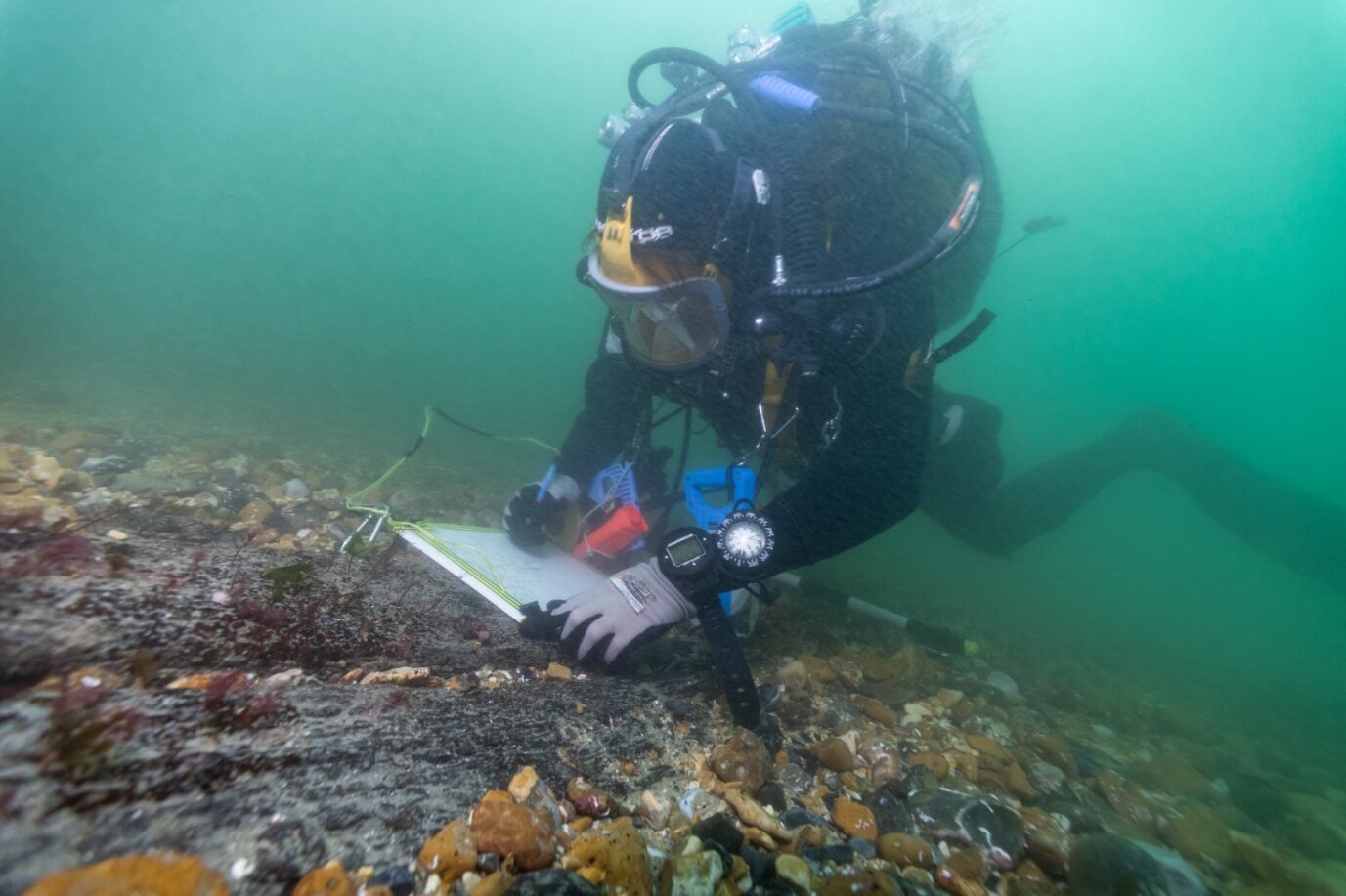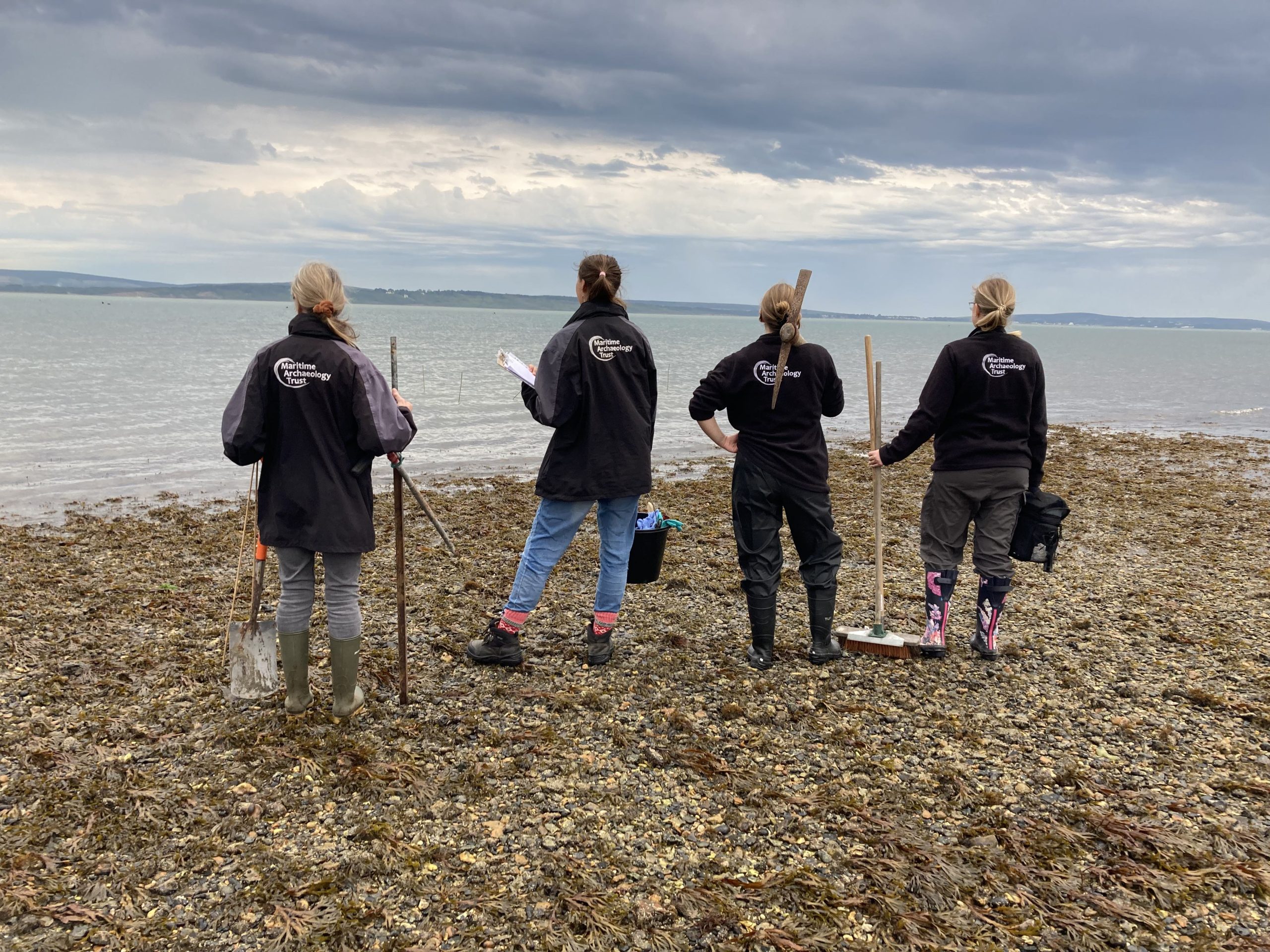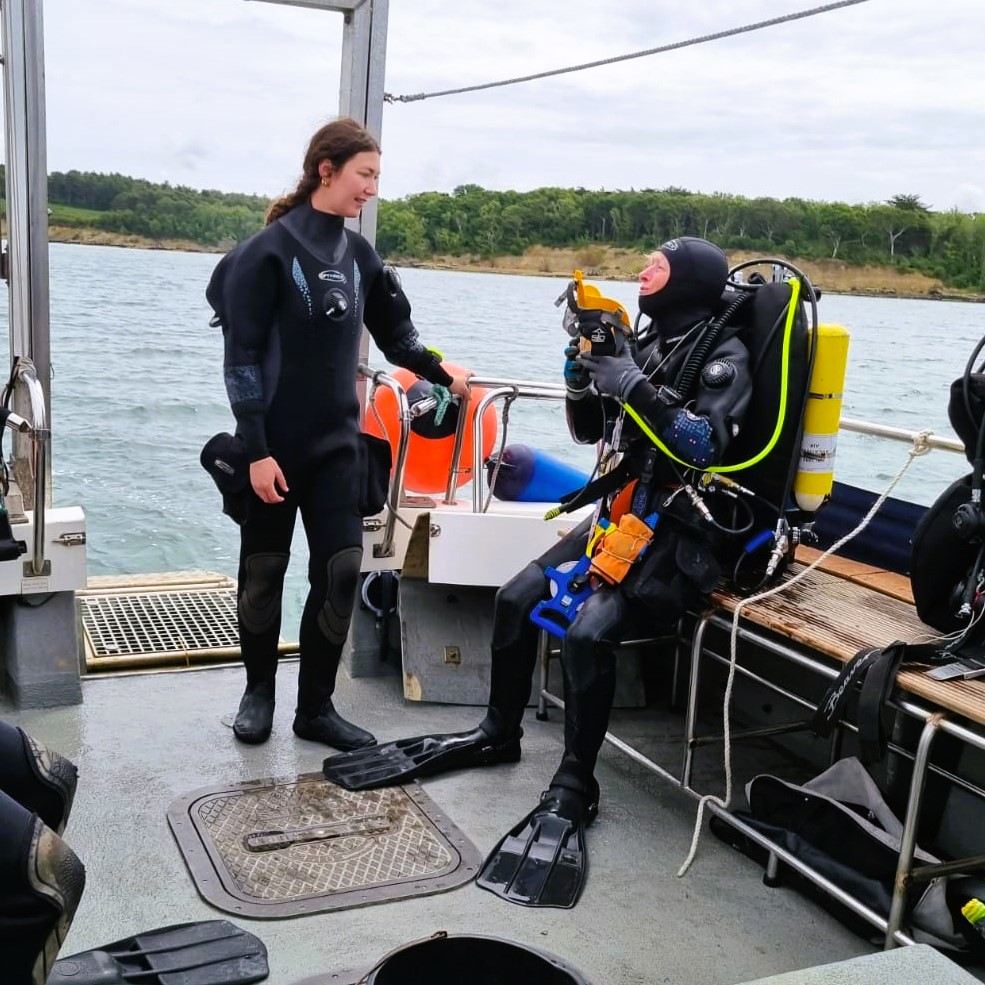There couldn’t be a better time than International Day for Women in Maritime (#WomenInMaritimeDay) to take a look at the outcomes of our recent project ‘Women and Protected Wrecks’ which was funded by Historic England as one of the projects marking 50 years of the Protection of Wrecks Act. Here Lauren Tidbury takes a look at the motivations for the project and some of the findings.
There are currently 57 shipwrecks off England designated under the Protection of Wrecks Act, and around 25 Scheduled wrecks. When we hear stories of these ships they can be dominated by traditional masculine narratives, but women were and are a major part of their stories. In terms of women on board, this has been a difficult area to research, the historical records rarely mention women on board as they were often not paid or even provisioned for. Also, with a high proportion of the designated wrecks being naval warships or submarines there are fewer opportunities to identify women.
However, their stories are out there, we learnt more about Catherine Trelawny who survived the wreck of the Assurance, with artefacts recovered from the wreck site thought to have been her possessions. As well as a Miss Catherine May, who was on board the emigrant ship Josephine Willis headed to New Zealand when the ship was lost in a collision, of the 13 survivors she was the only female. Jump forward nearly two hundred years and women are still absent from many of the ongoing stories of these wreck sites. Protected Wrecks require a licence to dive on them and statistics from 2021 showed that only 3% of principal licensees were women, and of other licences issued only 10% had been issued to women.
These shocking figures helped inspire the project which aimed to better understand the apparent low levels of female involvement, look at why this is, what impact this is having on our understanding of designated wrecks, and how we might begin to address this.

Figure 1: Christin Heamagi working on the Shingles Bank Protected Wreck site.
Source: Maritime Archaeology Trust
Some of the headline statistics found during desk-based research show that:
- The number of female Protected Wreck (PW) licensees is now at 6%, while numbers within PW teams exhibit a consistent trend of being 80% male and 20% female;
- Other statistics from across the sector included: within professional maritime archaeology (largely commercial and charity sector) there were 56% women and 44% men; University teaching staff are 65% male: 35% female; membership-based organisations are 63% male: 37% female; at Trustee, Board and Patron level in organisations it is 70% male: 30% female;
- Those speaking at maritime archaeological conferences are 80% male: 20% female, and within maritime archaeological publication the proportion of female authors is 20%, and within just UK PWs publication that falls to 13%;
- The percentages of women involved in UK diving is around 30% female: 70% male.
These statistics are the first to consider gender within UK maritime archaeology and particularly related to PWs. They provide some sobering figures with female representation most commonly between 20% and 30% (and even lower in some aspects of PWs), although there are some more encouraging figures for women in some areas of the sector.

Figure 2: MAT team on the Beaulieu foreshore
Source: Maritime Archaeology Trust
As part of this project, we also heard from women working with designated wrecks through an online survey and interviews, to better understand their involvement and any barriers they may have faced. The overwhelming impression was that they all found working with designated wrecks highly rewarding, most of the women we spoke to had been involved in a professional capacity and had worked on a number of sites over many years. They highlighted the variety of work involved in these wrecks, including diving, research, conservation and public engagement. These wrecks have fascinating stories to tell, and being part of that is a hugely rewarding experience. We were privileged to hear from inspiring women who had led projects, pioneered techniques and fought for the protection of our unique underwater heritage. However, what also became clear was the barriers women have faced based on their gender, much of which has, in the past, been accepted as the norm. We heard from women who have felt that to be accepted as an equal to their male counterparts they had to work a lot harder. Diving in the UK, and globally is male dominated, and women who have dived as part of a PW team were almost always in male-dominated teams. So, we wanted to understand the reasons for this and how we can begin to change this.
Some key barriers to involvement that were raised included a lack of opportunities, constraints due to family, work and other commitments: ingrained social expectations for taking on more responsibility for home and childcare impact the ability to take part in diving. The lack of female role models was raised by many of the women we spoke to, and we also discussed physical barriers to involvement. Although this is changing, dive equipment has in the past been designed for men and there are issues with women feeling the cold more than men as well as a lack of toilet facilities on boats. What also needs to be stressed is that working with designated wrecks, is not just about diving, women have been involved in many other aspects, some of which are often overlooked.

Figure 3: Working on underwater finds
Source: MSDS
Confidence was also raised by many of the women we spoke to, along with a perceived lack of skills: with many having taken a break from diving to have a family it was noted there can be a lack of confidence to get back in the water, and some had masked their lack of confidence due to attitudes of male team members. Various other studies relating to women in leadership roles have raised this issue of confidence vs competence, with women often being far more competent than they think they are. Alongside this, women tend to shy away from promoting themselves on social media, despite the need for more female role models, women often hold back from sharing their achievements publicly.
So how can we start to change this? There are clearly many female role models out there, everyone we spoke to through the project has an inspiring story to tell, and have contributed to the discovery, research, conservation and engagement of designated wreck sites, both professionally and avocationally. We need to encourage women to talk about their experiences, promote their work, and invite them to speak at conferences and events. We need to foster a ‘see it to be it’ mentality, to encourage the next generation of women in the field. We also need to work harder more widely to provide opportunities, promote flexible working, build confidence and create an environment that is appealing to women, calling out inappropriate behaviour and challenging ingrained unconscious bias.
We also need to do more work on this. We need a better understanding of the past to influence the future, to look at women’s involvement in maritime archaeology in the past, how this has influenced the sites, techniques and research themes that have been focussed on, and ultimately the creation of maritime archaeological knowledge and the setting of priorities for research, management and protection. We also need to study the sector in more detail, including professionals and volunteers, to create a baseline to better identify any gender bias and issues, and place this within a broader understanding of the history and development of the sector.
Addressing the underrepresentation of women in maritime archaeology, including work with protected wrecks, requires concerted efforts to promote diversity, equity and inclusion within the field. This includes implementing policies and initiatives to support women’s participation and advancement, fostering mentorship and networking opportunities, and challenging gender stereotypes and biases. By creating a more inclusive and supportive environment, the field of maritime archaeology can benefit from contributions of a diverse range of talents and perspectives.

Figure 4: Divers Heather Anderson and Jan Gillespie on the boat
Source: Maritime Archaeology Trust
The project obtained more detailed statistics and lists some conclusions and recommendations for the sector as well as more widely, to find out more you can access the full report here.

